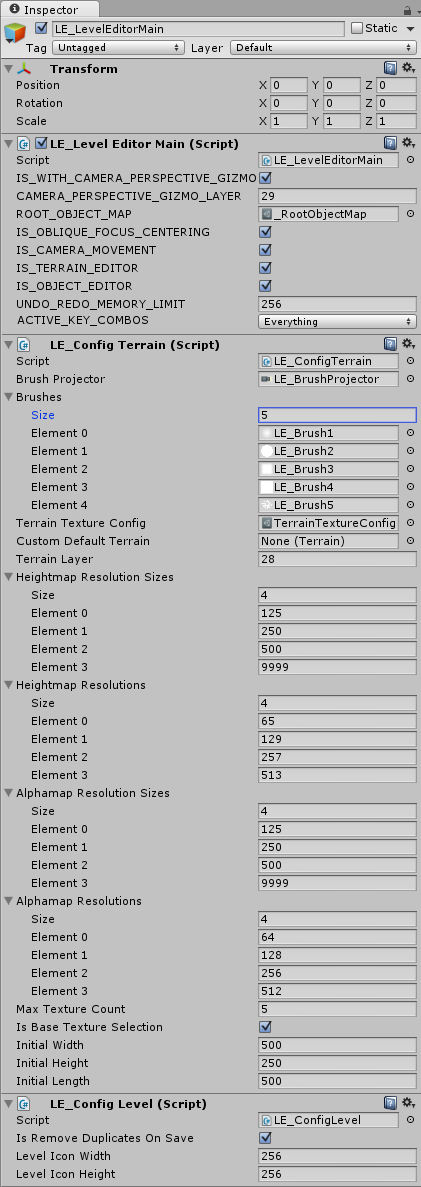Configuration
Documentation for Unity Asset Store version v1.20, v1.22 and v1.30
Easy Configuration
Your level editor scene will have a main editor game object with three configurable scripts attached: 'LE_LevelEditorMain', 'LE_ConfigTerrain' and 'LE_ConfigLevel'.|
LE_LevelEditorMain
LE_ConfigTerrain
LE_ConfigLevel
|

|



